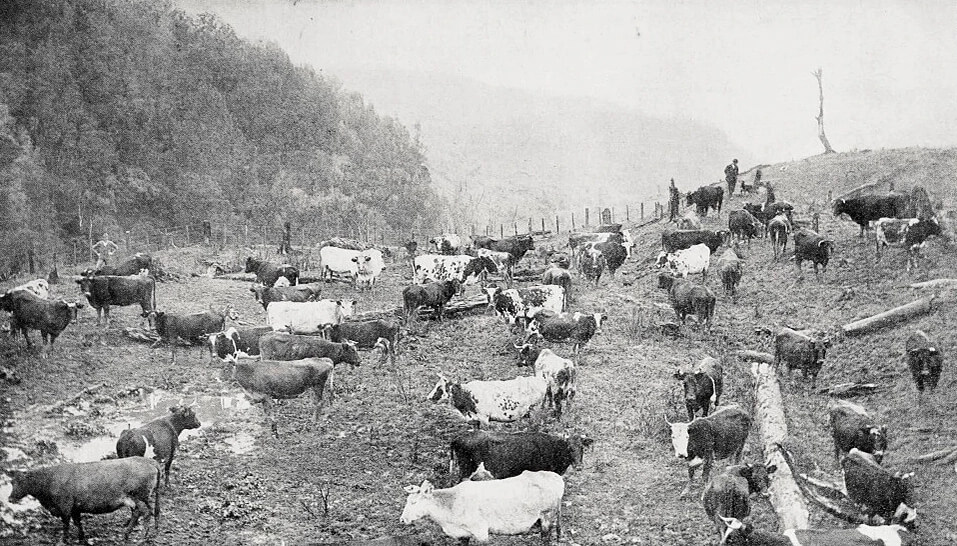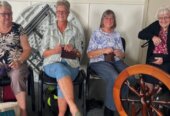
Winter on the dairy farm: the cattle grazing on a King Country holding
Something did not seem quite right to Sarah Henrickson.
There was confusion among the cows her husband, Llewellyn, was shifting from a paddock near the house to one on the other side of Te Rore Road. It was about 8 on a February morning in 1925 and cows were running up and down the road and one seemed to be down. Sarah went over to the spot and discovered Llewellyn lying on his back under the wire fence. She went to help him but on lifting him up found that he was dead. Her first horrified thought was that the bull had attacked him. She also noticed a cow lying dead in the fence a few yards away.
Sarah called for help, and two neighbours William McKinnon and Herbert Coxhead came to her aid. Coxhead’s employee, John Carruthers, recently arrived from Canada, went to return the cows to a paddock and while attempting to climb through the fence suddenly collapsed. It was then they realised the fence was somehow electrified. As well as the cow, a horse belonging to another neighbour and Herbert Coxhead’s dog were all fatally electrocuted. Dr Hall arrived about 8.40am. He had John Carruthers, who had sustained a severe electric shock and bad burns, removed to Waikato Hospital. He could do nothing for 33-year-old Llewellyn.
At the inquest Frank Patrick, foreman for the Te Awamutu Electric Power Board, said that he had made a thorough examination of the Te Rore electrical system on the road frontage of Henrickson’s property. A dead and partly burnt bittern was found beneath some 300-volt broken wires. In his opinion the bird had flown into the wires causing contact between the two-phase wires. The wires had burnt through and fallen down, coming in contact with the wire fence dividing the Henrickson’s property from the Te Rore Road, lethally electrifying it. On three previous occasions similar birds flying into the wires had caused the points of supply to disconnect.
The coroner said Power Boards should print leaflets pointing out what would happen if a break occurred, as in this case Mrs Henrickson and Mr Coxhead and Carruthers might very easily have been killed. He thought if the boards distributed such leaflets annually it might help to eliminate such cases in the future. The jury found that Llewellyn met his death by accidentally coming in contact with fence wires that were electrified by the main line being broken by a bittern flying into it. There was no suggestion of negligence on the part of the Power Board or its staff, the accident being caused by actions that were beyond anybody’s control.
Llewellyn and Sarah had lived at Te Rore for about six years. They had two small children. Llewellyn was a highly respected settler, with several years’ war service. He began farming at Te Rore following repatriation. He was buried at Te Awamutu cemetery.
His funeral was well attended with almost all of Te Rore being there to farewell the man whose life ended in such an extraordinary way on such an ordinary morning.








